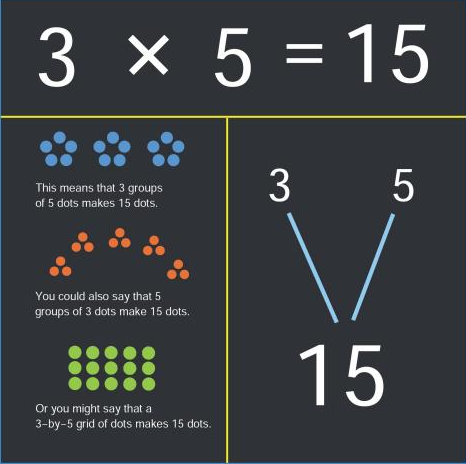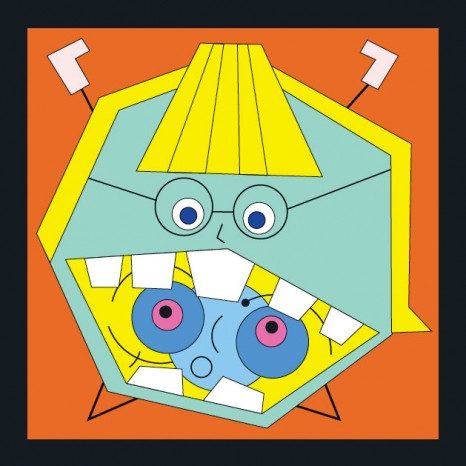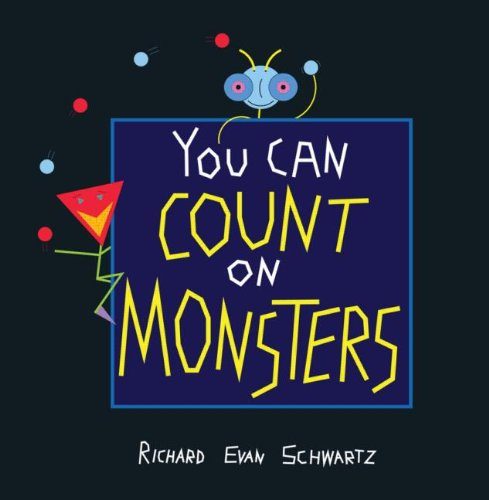The other day I received a math book that’s geared towards children. It’s called “You Can Count On Monsters” (USA | UK | Canada) by Professor Richard Evan Schwartz. This mathematics book is unconventional in the sense that it’s mostly comprised of drawings, with relatively few words or formulas. It’s square shaped, enjoyably colorful, and printed on stark black paper which really makes the illustrations pop.
Though it might surprise some to know, this is one of the most popular math books in print today – it’s even an Amazon best seller (when looking at overall Amazon sales, not just in the math category). Even more surprising, the book isn’t brand new and therefore just riding a wave of immediate (but ultimately short-lived) success. It was released over a year ago and has brought in some incredible sales figures over that time. On Amazon, You Can Count On Monsters mostly has five star reviews, and it’s been well reviewed by several outlets, including NPR.
So what is this book all about? I like Publishers Weekly’s factual and succinct description of the book:
This compact, innovative book counts to 100 using prime numbers represented as monsters, each with identifying characteristics (two resembles a bee with two buggy eyes, and three is an angry-looking triangular creature). The book opens with explanations of multiplication, prime and composite numbers, and factor trees, then moves on to a list of numbers. Each prime number looks unique, while composite numbers are represented by scenes involving their prime monsters (eight is illustrated as three of the beelike twos, i.e., two times two times two. Readers may have difficulty deciphering the pictures, which come to resemble little works of abstract geometric art. But especially for creative learners, visualizing the roles each monster plays may lead to deeper number sense. Ages 4 to 8.
This book is charming, interesting, fun, and clearly comes at the topic in a child-friendly manner, yet it’s still fascinating enough to engage older readers, too. It builds on the basic concept of integer multiplications and moves on to intuitively (and visually) illustrate the concept of prime numbers, composite numbers, factorization trees, and even more advanced topics such as the Sieve of Eratosthenes, as well as an illustration of Euclid’s proof for the existence of an infinite number of prime numbers.

While the illustrations may be targeted at children, the math in this book is rigorous and non-trivial considering the age group it’s geared towards. The approach taken is remarkable as it doesn’t fall into the trap of presenting mathematics to children as a dry, mechanical series of steps in an algorithm that will eventually solve a given problem. It takes an exploratory approach where experimentation and imagination are associated with the general idea of doing math.
The most important lesson this book presents is how to reason when it comes to viewing numbers like mathematician (and by the same token, how fun it can be to think in terms of numerical patterns).

2 x 7 = 14
You Can Count On Monsters may help children overcome their trepidations about mathematics, and even aid in the development of a real penchant for math from an early age, which will obviously be of great benefit to any child as they go through their school years and on to adulthood.
In short, we highly recommend picking up this excellent (and delightfully illustrated) book for your children, and spending some quality time together with them as you explore the colourful pages of You Can Count On Monsters. Your youngsters will enjoy the experience – and it may even help you take a new approach to how you help your child learn math from here on out.
Sponsor’s message: Math Better Explained is an insightful ebook and screencast series that will help you deeply understand fundamental mathematical concepts, and see math in a new light. Get it here.

Are the monsters connected to their number by virtue or by definition? If the latter, I fail to see how you can learn something about the numbers from it.
When I read the post’s title, I thought: “Kid, go and distribute these 17 cookies among your friends, but be fair!”
The book includes monsters for all numbers between 1 and 100. Monsters representing composite numbers are the combination of prime monsters. Part of the fun is figuring out which prime monsters compose a given composite monster. The prime monsters are not entirely arbitrary. For example 2 is a pair of eyeballs, 3 is a triangle, 7 is a heptagon like figure.
Thanks for the great post! I just had a son, Sept 3, and am looking for books that will introduce him to math. I’ll definitely add this to his book growing book collection.
Congratulations on your baby, Basil! 🙂
Great Job here!
I’ve inveted a new process to find the prime number. Its visual and so ease. Good to children!
Could you avaluate it?
English version
https://www.youtube.com/watch?v=M04XScOYz40
Portuguese Version
https://www.youtube.com/watch?v=ZLorvAkyMA0
I’ve just been investigating factors and prime factors visually with my class of 9 year olds – https://pinkmathematics.blogspot.fr/2013/02/important-factors.html
This book looks like great way to approach the theme too. Thanks for the review.
I am a beginning student teacher who is still attending university. I really like your practical approach to learning this skill that may seem somewhat daunting from an outside perspective. We have been talking about how to used books to integrate into math lessons and this is extremely helpful. I will direct others in my class to check this out. Thank-you